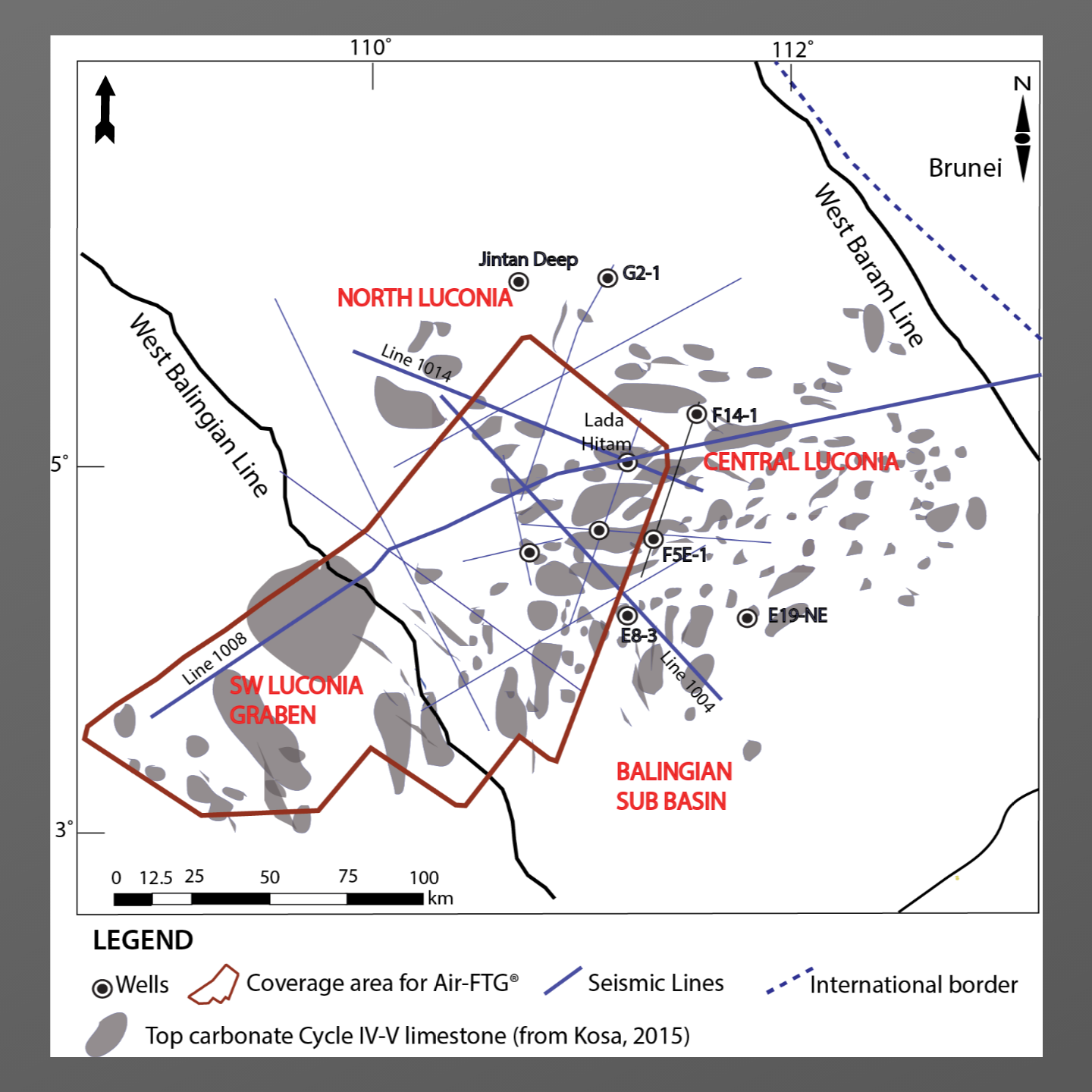Siti Nur Fathiyah Jamaludin 1,* , Manuel Pubellier 2 and Benjamin Sautter 3 - Shallow vs. Deep Subsurface Structures of Central Luconia Province, Offshore Malaysia Revealed by Aeromagnetic, Airborne Gravity and Seismic Data. Appl. Sci. 2021, 11, 5095. https://doi.org/10.3390/app11115095
1 - South East Asia Carbonate Research Laboratory (SEACaRL), Institute of Hydrocarbon Recovery, Universiti Teknologi PETRONAS
2 -Laboratoire de Géologie, Ecole Normale Superieure, PSL Research University, CNRS UMR 8538, 75005 Paris, France
3 - Commission for the Geological Map of the World (CMGW), 77 rue Claude-Bernard, 75005 Paris, France
Bell Geospace kindly acknowledges the authors and PETRONAS MPM for allowing distribution of this paper on the Bell Geospace website.
Summary
A paper based on the Air-FTG and aeromagnetic data interpretation for Central Luconia Province, off the coast Sarawak, offshore Malaysia has been published in Special Issue Evaluation of the Crustal Structure, MDPI Applied Sciences Journal.
The paper shows how to utilize the airborne gravity and magnetic data for structural interpretation within Central Luconia area. The results have shown that airborne gravity (Tzz) reflects mainly the structures affecting Cycle III/IV carbonate while Tz airborne gravity might represent structures/morphology for Cycle II deposition. On the other hand, the aeromagnetic data provides an excellent resolution to illuminate the potential structures representing the crystalline (magnetic) basement of this area.
The author commented ''We have very little information on how the crust (basement) of Central Luconia (all Luconia provinces) behave. This paper is highlighting an E-W elongated structure from the aeromagnetic interpretation (TMI_1vd) which might give an idea on the crustal/basement of Central Luconia''.
The data is courtesy of MPM , Petronas and was acquired by Bell Geospace

